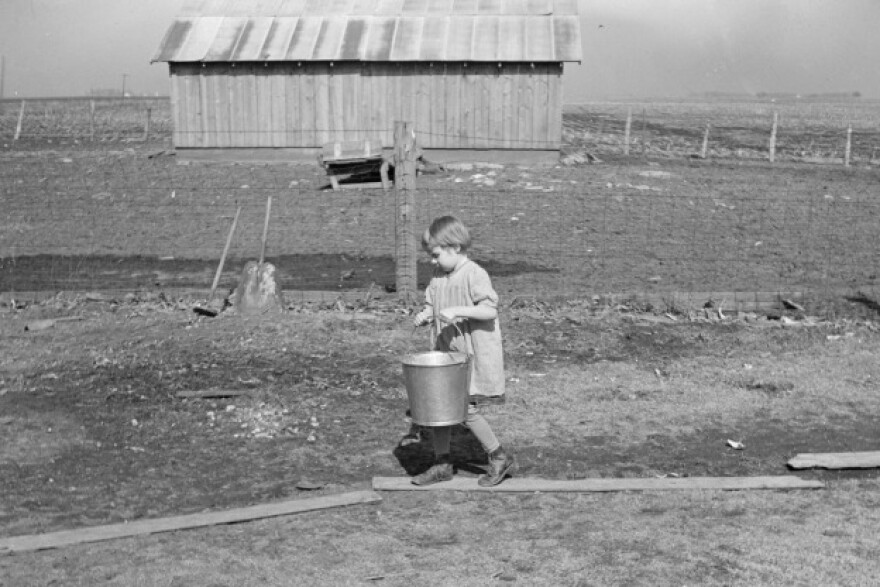By the Staff of the Indiana Magazine of History
Archive: September 23, 2013
Some of the most iconic images of American life in the 20th century are from photographs taken by Farm Security Administration photographers during the Great Depression. Many of the well-known images are of farm families from the dustbowl of the Great Plains, but there were many other families, Hoosiers among them, whose lives were captured forever by the camera.
In March 1937, photographer Russell Lee (hired by the Resettlement Administration, the forerunner of the FSA) spent a day in the home of an Indiana tenant farmer and his family. Tip and Laverne Estes and eight children lived in a small shack near Fowler, Indiana. Tip was a tenant farmer, on the lowest economic rungs of the Depression economy. Lee photographed Tip and his older sons at work on the farm; Laverne at work in her tiny kitchen; six-year-old Sue carrying water into the house. He also photographed the fine, large home in town where the farm’s owner lived, as well a smaller but tidy white farmhouse that had been promised to the Estes family, but was instead rented out to someone else. Lee’s photographs revealed the 12-14 hours days worked by Estes and other tenant farmers, as well as the bare poverty of their homes.
Like so many other working families in the 1930s, the Estes lost what little they had when a local bank failed. Tip lost his tractor and was forced to move into town and try to find work there. The photographs and stories of the lives of the Estes family and others captured by the RA and FSA photographers helped convince many Americans to support the farm programs of the Roosevelt administration. FSA loan programs helped thousands of tenant farmers to buy their own land; by the time the U.S. entered World War II, many former tenants had become prosperous landowners and their families no longer had to endure the hardships and deprivations of farm tenancy, as had Tip Estes and his family.
Source: Alissa Wetzel, “New Deal Photographs of the Hoosier State: Farm Tenancy, the Great Depression, and the Young Girl who Lived Through it All,” Indiana Magazine of History 109 (September 2013).



